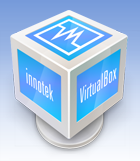 When accessing the settings dialog in VirtualBox on Ubuntu/Kubuntu 7.10 Gusty Gibbon, I would get the error, “Could not load the Host USB Proxy Service (VERR_FILE_NOT_FOUND). The service might be not installed on the host computer.” I found a variety of fixes from different forums and blogs so here’s a consolidated guide to resolve the issue based on my installation of VirtualBox 1.5.6 on Kubuntu 7.10.
When accessing the settings dialog in VirtualBox on Ubuntu/Kubuntu 7.10 Gusty Gibbon, I would get the error, “Could not load the Host USB Proxy Service (VERR_FILE_NOT_FOUND). The service might be not installed on the host computer.” I found a variety of fixes from different forums and blogs so here’s a consolidated guide to resolve the issue based on my installation of VirtualBox 1.5.6 on Kubuntu 7.10.
- Open the file /etc/init.d/mountdevsubfs.sh with your favorite text editor (be sure to use sudo or open as root so that you have write permission).
- Look for the following comment:# Magic to make /proc/bus/usb work
- Remove the hash mark, #, from the four commands (mkdir, domount, ln, mount) following that comment. The result should look like the following:#
# Magic to make /proc/bus/usb work
#
mkdir -p /dev/bus/usb/.usbfs
domount usbfs “” /dev/bus/usb/.usbfs -obusmode=0700,devmode=0600,listmode=0644
ln -s .usbfs/devices /dev/bus/usb/devices
mount –rbind /dev/bus/usb /proc/bus/usb - Save the file and run it with sudo (or as root) appending the parameter “start” to the end:sudo /etc/init.d/mountdevsubfs.sh start
- Next, create a new user group called usbusers. On Kubuntu, you can do this with the User Management tool in the KDE Control Center.
- Add your username, and anyone else who uses VirtualBox on the computer, to the usbusers group. Save the changes.
- Open the file /etc/udev/rules.d/40-permissions.rules (again, using sudo or as root).
- Change the following lines:# USB devices (usbfs replacement)
SUBSYSTEM==”usb_device”, MODE=”0664″to
# USB devices (usbfs replacement)
SUBSYSTEM==”usb_device”, GROUP=”usbusers”, MODE=”0664″ - Save the file.
Now it should work fine and you don’t even have to reboot.
